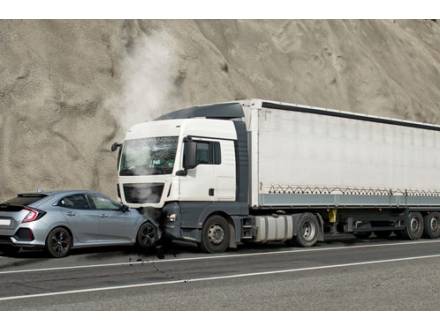Trucks Vs. Cars in Serious Accidents: Nobody Wins
 When trucks and cars collide, catastrophic injuries and extensive property damage often result. In truck accidents, occupants of other vehicles have a much higher chance of sustaining injuries; some truck crashes cause fatalities.
When trucks and cars collide, catastrophic injuries and extensive property damage often result. In truck accidents, occupants of other vehicles have a much higher chance of sustaining injuries; some truck crashes cause fatalities.
Truck drivers are not always to blame for causing these collisions. Many times, other drivers do not understand the differences between how cars and trucks operate. Even if you share fault, you may be entitled to compensation. Our experienced personal injury lawyer is well-versed in handling claims like yours effectively.
What Are the Differences Between Trucks and Cars?
A fully loaded semi-truck can weigh up to 80,000 pounds, but the average passenger vehicle only weighs around 4,000. Trucks average 72 feet in length, while most cars are approximately 15 feet long. Most cars are about five feet tall, with trucks towering over them at 13.5 feet in height. These differences are significant when it comes to impact force, required stopping distance, and the types of unique accidents that can occur.
Impact Force
A truck’s substantial weight can cause a disastrous impact force when it collides with a car or another object. This force can crush cars, push them across traffic lanes, or cause them to roll.
Stopping Distance
The enormous weight of trucks makes a significant difference in stopping time and distance compared to cars. At 65 mph, a car can stop after traveling approximately 316 feet. At the same speed, a fully loaded truck needs 525 feet to stop.
Unique Accidents
Because trucks are so tall, cars can become wedged underneath them. An underride accident happens when a car rear-ends a truck and travels underneath the bottom of the trailer, often crushing the front of the passenger compartment and causing devastating injuries to car occupants. Override collisions happen when a truck rear-ends a car, with the bottom of the truck’s cab covering the car’s trunk and crushing the rear of the passenger compartment.
How Do Other Motorists Misjudge a Truck’s Handling?
Trucks generally use air brakes, which take time to engage. This means it takes longer for trucks to begin slowing down after the driver starts to brake. Particularly when changing lanes, car drivers may misjudge the distance and time a truck needs to slow or stop. If a car merges ahead of a truck without allowing for enough space, the truck may collide with the car.
Another issue that car drivers may not understand is that trucks have huge blind spots, which are sometimes called "no man’s land." If you are traveling beside a truck on either side, the driver may not be able to see your vehicle. This can lead to sideswipe accidents or cause you to hit other vehicles because you are trying to avoid a collision with the truck.
Injured in a Truck Accident? Contact Our Plainfield, IL Motor Vehicle Accident Lawyer
Truck accidents are often tragic, causing significant injuries and lingering effects. Even if you are partially responsible for causing your collision, an experienced Will County, IL truck accident lawyer from Flaherty Law, LLC can help. Call us at 815-577-7500 today for your free consultation to see if your case qualifies for compensation. We are dedicated to helping you achieve a favorable outcome.






